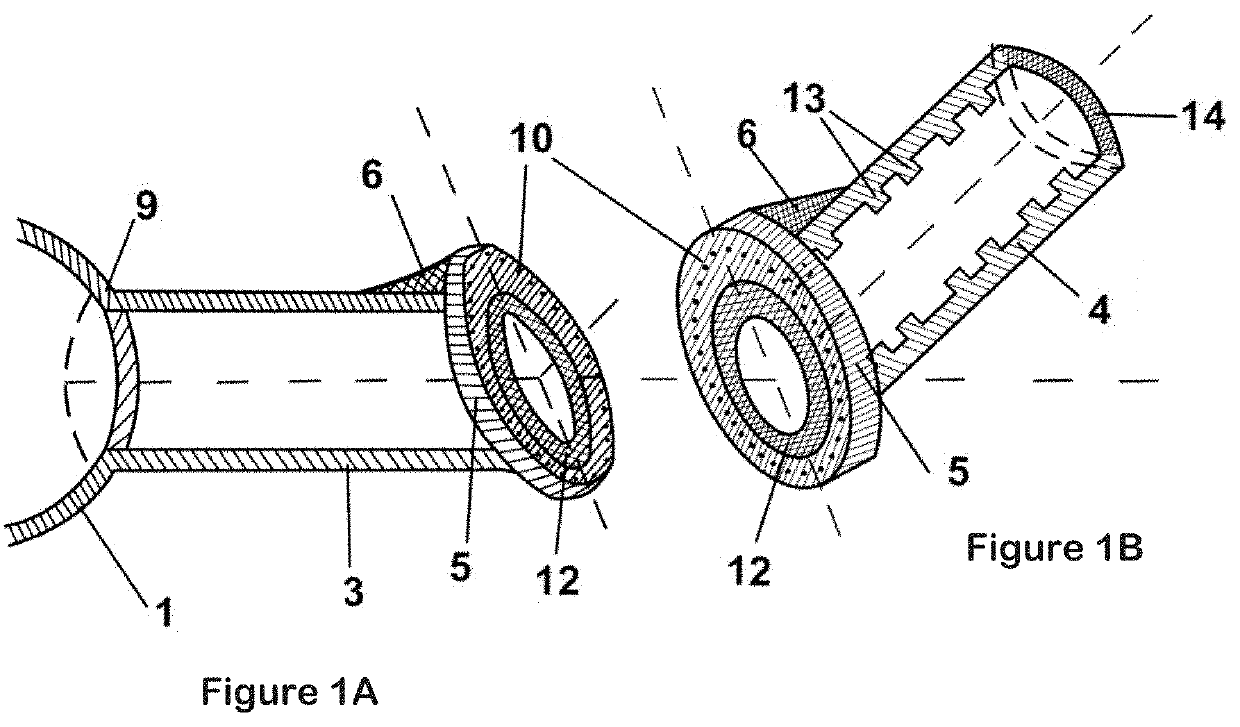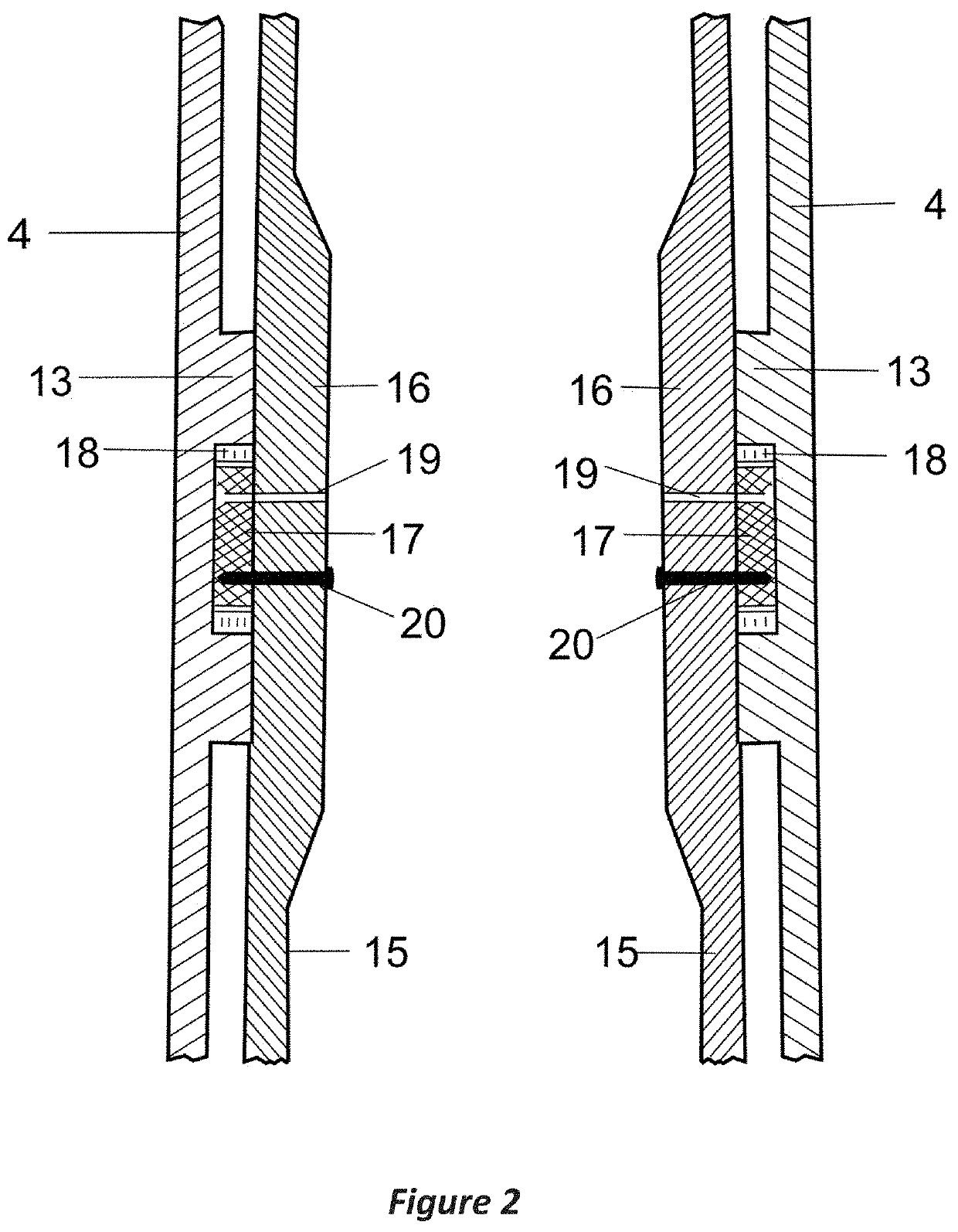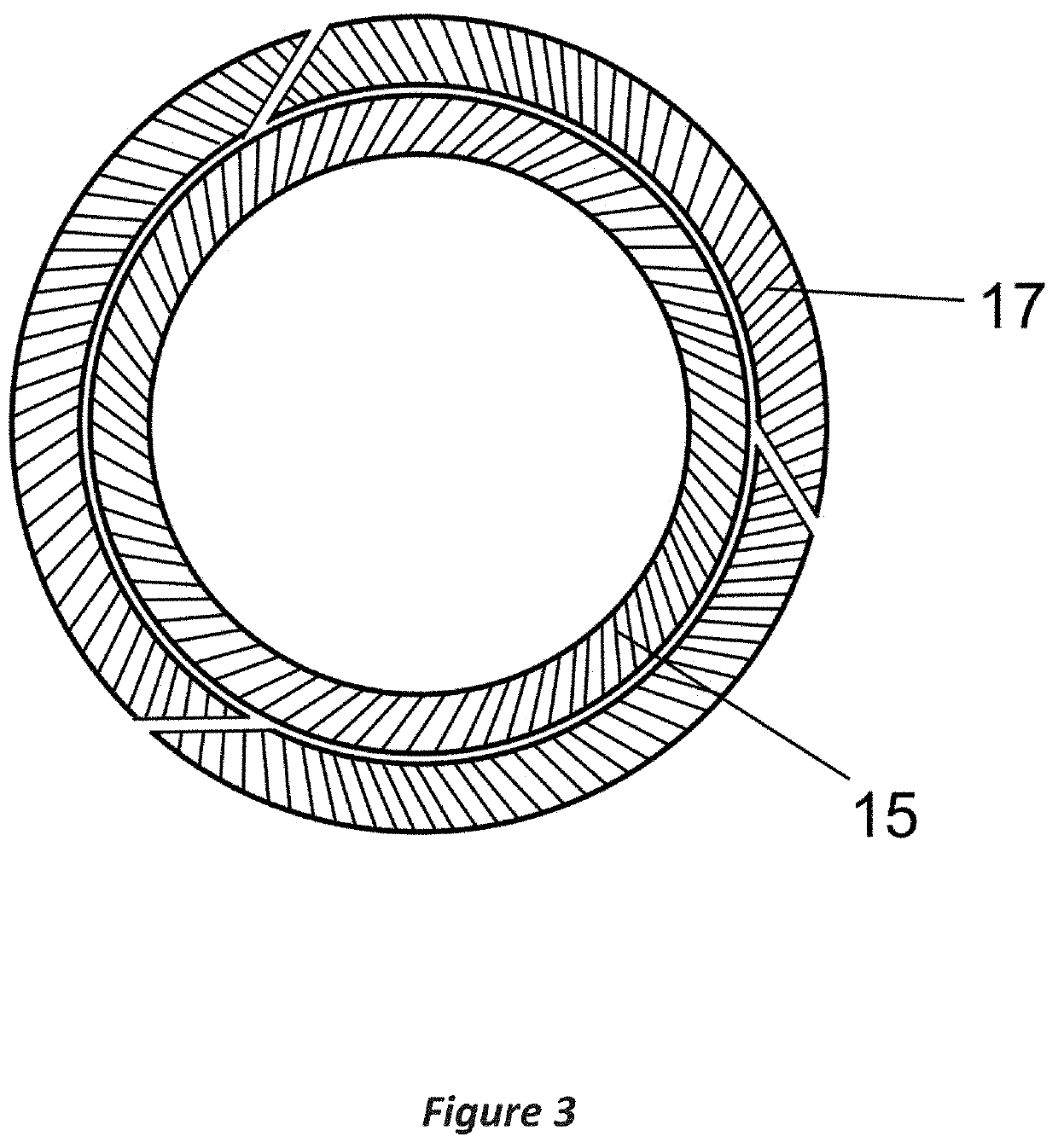Wind wheel with blade elbow bend
a technology of wind turbines and elbows, which is applied in the direction of wind turbines, engine components, wind energy generation, etc., can solve the problems of limiting the use of the long wing-shaped blade lever action to increase complicating technological problems, and certain technical difficulties, so as to reduce the possibility of breakage, improve the rotational effect in other parameters, and complicate technological problems.
- Summary
- Abstract
- Description
- Claims
- Application Information
AI Technical Summary
Benefits of technology
Problems solved by technology
Method used
Image
Examples
Embodiment Construction
[0033]The structural details of the axial (FIG. 1A) and sleeve (FIG. 1B) segments of the short elbow part of the blade include the following: plant hub 1, which is connected to the main shaft of the engine, axial part cylindrical skeleton 3, sleeve segment cylindrical skeleton 4, axial and sleeve segment wall 12, top edge protuberance 5 for connecting the axial and sleeve segments, additional steel reinforcement of the edge and wall on the inside of the bend 6, edge holes 10, sleeve segment annular supports 13, and sleeve segment face end 14 for connection to the wing-shaped blade.
[0034]The axial segment has a hollow cylindrical shape (FIG. 1A), and is connected by bolts (not shown) to the wall of wind plant hub opening 9. The end of the axial part facing the bend has an elliptical shape, obliquely canted along the half-arc line between the axial line of the axial and sleeve parts running through their intersection point. The slope is directed outward from the direction of rotation ...
PUM
 Login to View More
Login to View More Abstract
Description
Claims
Application Information
 Login to View More
Login to View More - R&D
- Intellectual Property
- Life Sciences
- Materials
- Tech Scout
- Unparalleled Data Quality
- Higher Quality Content
- 60% Fewer Hallucinations
Browse by: Latest US Patents, China's latest patents, Technical Efficacy Thesaurus, Application Domain, Technology Topic, Popular Technical Reports.
© 2025 PatSnap. All rights reserved.Legal|Privacy policy|Modern Slavery Act Transparency Statement|Sitemap|About US| Contact US: help@patsnap.com



